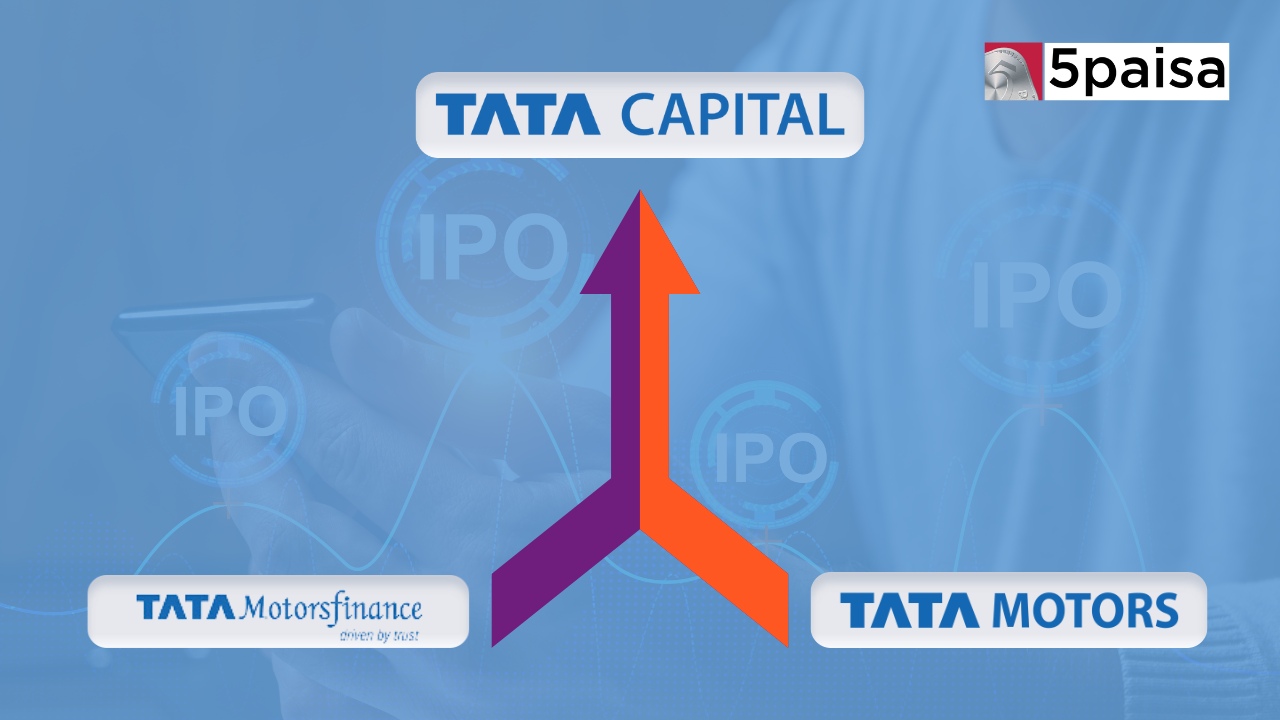Large Cap Stocks
| Company Name | LTP | % Change | Market Cap |
|---|---|---|---|
|
ACC Ltd |
2360.15 | -2.3 | 44320.61 |
|
Aegis Logistics Ltd |
598.6 | 3.4 | 21010.86 |
|
Apollo Tyres Ltd |
480.75 | 0.5 | 30532.48 |
|
Ashok Leyland Ltd |
198.3 | 1.9 | 58227.37 |
|
Asian Paints Ltd |
2771.25 | 2.3 | 265817.69 |
|
SKF India Ltd |
4996.4 | 1.0 | 24701.18 |
|
Bajaj Holdings & Investment Ltd |
8431.55 | 0.6 | 93834.72 |
|
Balkrishna Industries Ltd |
2477.75 | 1.5 | 47899.17 |
|
Bayer CropScience Ltd |
5245 | -0.3 | 23547.63 |
|
Berger Paints India Ltd |
490.25 | 1.9 | 57153.15 |
|
Bharat Forge Ltd |
1397.7 | -1.1 | 65075.32 |
|
Blue Star Ltd |
1413.55 | 1.9 | 29103.75 |
|
Abbott India Ltd |
26375 | 3.2 | 56037.31 |
|
Britannia Industries Ltd |
5066.8 | -0.1 | 122043.15 |
|
Carborundum Universal Ltd |
1463.7 | -0.3 | 27848.01 |
|
Century Textiles & Industries Ltd |
2000.55 | 0.0 | 22345.28 |
|
Exide Industries Ltd |
452.25 | 0.8 | 38441.25 |
|
Cipla Ltd |
1339.55 | -1.4 | 108154.59 |
|
Colgate-Palmolive (India) Ltd |
2800.15 | 1.2 | 76160.06 |
|
Coromandel International Ltd |
1181.05 | -0.2 | 34775.19 |
|
CG Power & Industrial Solutions Ltd |
580 | -0.4 | 88585.33 |
|
Deepak Nitrite Ltd |
2494.55 | 2.4 | 34023.93 |
|
EIH Ltd |
485.8 | 1.7 | 30380.19 |
|
Eicher Motors Ltd |
4657.85 | 2.0 | 127534.56 |
|
GE T&D India Ltd |
1000 | -0.8 | 25466.73 |
|
Escorts Kubota Ltd |
3553.3 | 3.1 | 39263.35 |
|
Nestle India Ltd |
2533.2 | 0.8 | 244240.29 |
|
Glaxosmithkline Pharmaceuticals Ltd |
1972.3 | -0.2 | 33411.95 |
|
Kansai Nerolac Paints Ltd |
277.85 | 0.4 | 22460.83 |
|
Grindwell Norton Ltd |
2163 | 0.1 | 23957.59 |
|
Ambuja Cements Ltd |
581.8 | 1.3 | 115524.84 |
|
Grasim Industries Ltd |
2377.15 | 1.0 | 158935.61 |
|
Hero MotoCorp Ltd |
4877.4 | 2.4 | 97514.4 |
|
ABB India Ltd |
7178.35 | 2.8 | 152115.25 |
|
Hindalco Industries Ltd |
625.6 | 1.0 | 140585.87 |
|
Hindustan Unilever Ltd |
2362.55 | 1.6 | 555102.68 |
|
Indian Hotels Co Ltd |
543.55 | -1.3 | 77370.66 |
|
Linde India Ltd |
7810.4 | 3.1 | 66607.09 |
|
Gillette India Ltd |
6780 | -1.9 | 22157.62 |
|
Tata Investment Corporation Ltd |
6809.05 | -0.9 | 34450.59 |
|
ITC Ltd |
433.35 | 1.9 | 541025.4 |
|
J B Chemicals & Pharmaceuticals Ltd |
1817.35 | 2.9 | 28204.33 |
|
Cummins India Ltd |
3411.8 | 0.4 | 94575.1 |
|
Trent Ltd |
4471.4 | 1.4 | 158952.66 |
|
Larsen & Toubro Ltd |
3271.45 | -0.1 | 449715.97 |
|
Mahindra & Mahindra Ltd |
2193.05 | -0.9 | 272712.09 |
|
Max Financial Services Ltd |
976.1 | 1.4 | 33686.65 |
|
Bosch Ltd |
30431.95 | 1.8 | 89754.9 |
|
MRF Ltd |
127595.7 | 1.1 | 54100.58 |
|
Schaeffler India Ltd |
3791.95 | 0.0 | 59269.57 |
|
Reliance Industries Ltd |
2814.85 | 1.0 | 1904440.16 |
|
Procter & Gamble Hygiene and Health Care Ltd |
15734.6 | 0.3 | 50973.58 |
|
Vedanta Ltd |
410.7 | 4.1 | 152665.66 |
|
Shree Cement Ltd |
25661.25 | 0.6 | 92587.71 |
|
SRF Ltd |
2278.05 | -0.6 | 67527.06 |
|
Siemens Ltd |
6168.15 | 0.6 | 219660.32 |
|
TVS Holdings Ltd |
10150 | 4.4 | 20627.34 |
|
Sundram Fasteners Ltd |
1134.4 | -0.7 | 23836.96 |
|
Sundaram Finance Ltd |
4565.5 | 3.3 | 50722.71 |
|
Supreme Industries Ltd |
5277.05 | -2.3 | 67032.71 |
|
Tata Chemicals Ltd |
1058.65 | 1.4 | 26970.17 |
|
Tata Power Company Ltd |
414.85 | 0.3 | 132558.66 |
|
Tata Consumer Products Ltd |
1090.95 | 0.5 | 103949.51 |
|
Tata Motors Ltd |
1046.65 | 1.6 | 383804.87 |
|
Tata Steel Ltd |
162.25 | 0.2 | 202545.23 |
|
Cholamandalam Financial Holdings Ltd |
1072.1 | -1.3 | 20131.62 |
|
Voltas Ltd |
1287.55 | 0.9 | 42603.06 |
|
Wipro Ltd |
451.85 | -0.9 | 236190.6 |
|
Apollo Hospitals Enterprise Ltd |
5842.45 | 0.6 | 84005.47 |
|
Patanjali Foods Ltd |
1363.9 | 0.8 | 49281.98 |
|
Dr Reddys Laboratories Ltd |
5921 | 0.7 | 98773.1 |
|
Titan Company Ltd |
3289.85 | 1.4 | 292068.33 |
|
Honeywell Automation India Ltd |
46823.2 | 8.2 | 41391.71 |
|
State Bank of India |
817.35 | -0.3 | 729453.16 |
|
Godrej Industries Ltd |
822.6 | -1.9 | 27696.18 |
|
Shriram Finance Ltd |
2344.35 | -0.7 | 88098.99 |
|
Apar Industries Ltd |
7636.2 | 0.3 | 30673.33 |
|
3M India Ltd |
28700 | -0.5 | 32338.48 |
|
Radico Khaitan Ltd |
1639.55 | 2.1 | 21923.3 |
|
Cholamandalam Investment & Finance Company Ltd |
1272.65 | 4.1 | 106907.81 |
|
Timken India Ltd |
3400.65 | -1.6 | 25579.26 |
|
Bharat Petroleum Corporation Ltd |
618.65 | 4.5 | 134200.82 |
|
Tata Communications Ltd |
1742.05 | 0.9 | 49648.43 |
|
Bharat Electronics Ltd |
227.1 | 0.4 | 166005.08 |
|
Steel Authority of India Ltd |
156.9 | 2.5 | 64807.94 |
|
Fertilizers & Chemicals Travancore Ltd |
659.9 | 1.3 | 42700.28 |
|
NLC India Ltd |
217.4 | 2.1 | 30145.48 |
|
National Aluminium Company Ltd |
173.95 | 1.9 | 31948.21 |
|
Hindustan Petroleum Corporation Ltd |
501.55 | 0.1 | 71147.29 |
|
Bharat Heavy Electricals Ltd |
274.3 | 0.4 | 95513 |
|
Hindustan Zinc Ltd |
525.5 | 15.2 | 222040.51 |
|
Tata Elxsi Ltd |
7127.4 | -0.3 | 44386.91 |
|
Kotak Mahindra Bank Ltd |
1627.95 | -0.9 | 323623.58 |
|
ITI Ltd |
277.9 | 0.2 | 26703.05 |
|
Aarti Industries Ltd |
672.65 | 1.1 | 24383.83 |
|
UPL Ltd |
501.9 | 7.6 | 37673 |
|
Mangalore Refinery And Petrochemicals Ltd |
210.55 | -1.8 | 36900.99 |
|
Lloyds Metals & Energy Ltd |
682.6 | 2.8 | 34473.45 |
|
P I Industries Ltd |
3555.15 | 1.1 | 54051.1 |
|
Infosys Ltd |
1424.9 | -1.0 | 591457.1 |
|
Samvardhana Motherson International Ltd |
127.6 | 1.7 | 86467.14 |
|
Lupin Ltd |
1608.55 | 1.6 | 73309.68 |
|
Ratnamani Metals & Tubes Ltd |
3130 | 0.7 | 21902.7 |
|
Pidilite Industries Ltd |
2919.95 | 2.9 | 148511.38 |
|
CRISIL Ltd |
4354 | 1.2 | 31867 |
|
Havells India Ltd |
1686.75 | 0.8 | 105705.76 |
|
Mphasis Ltd |
2231.2 | -0.8 | 42169.79 |
|
Dabur India Ltd |
550.8 | -0.4 | 97603.92 |
|
Torrent Pharmaceuticals Ltd |
2599.9 | 3.0 | 87988.48 |
|
Ipca Laboratories Ltd |
1312.95 | 2.2 | 33310.1 |
|
Federal Bank Ltd |
159.95 | 1.8 | 38965.18 |
|
Bajaj Finance Ltd |
6684.15 | 1.2 | 413746.43 |
|
Hindustan Copper Ltd |
372.95 | 4.3 | 36065.16 |
|
Adani Enterprises Ltd |
2797.25 | 1.1 | 318886.81 |
|
LIC Housing Finance Ltd |
626.5 | 1.0 | 34461.45 |
|
Sun Pharmaceuticals Industries Ltd |
1506.55 | 0.8 | 361471.81 |
|
Aurobindo Pharma Ltd |
1127.55 | 1.1 | 66067.51 |
|
KEI Industries Ltd |
3928.5 | 2.3 | 35451.35 |
|
JSW Steel Ltd |
853.6 | 2.3 | 208743.95 |
|
Thermax Ltd |
4582 | 2.2 | 54596.23 |
|
HDFC Bank Ltd |
1437.9 | -0.7 | 1092359.78 |
|
Poonawalla Fincorp Ltd |
462.85 | 2.4 | 35850.58 |
|
Relaxo Footwears Ltd |
851.3 | 1.0 | 21192.14 |
|
Tata Consultancy Services Ltd |
3893.9 | -1.7 | 1408847.1 |
|
ICICI Bank Ltd |
1117.05 | 0.1 | 784871.19 |
|
IDBI Bank Ltd |
83.6 | 0.2 | 89890.08 |
|
Oil India Ltd |
619.1 | 0.3 | 67135.53 |
|
Power Grid Corporation of India Ltd |
303.75 | 2.6 | 282505.84 |
|
Bank of Baroda |
254.85 | -3.0 | 131792.17 |
|
Canara Bank |
548.15 | 0.5 | 99441.55 |
|
UCO Bank |
52.95 | 1.9 | 63306.8 |
|
General Insurance Corporation of India |
321.5 | 0.2 | 56403.96 |
|
Union Bank of India |
142 | -0.1 | 108397.2 |
|
Maruti Suzuki India Ltd |
12675.5 | 1.4 | 398520.98 |
|
Ircon International Ltd |
228.3 | 0.9 | 21471.97 |
|
IndusInd Bank Ltd |
1410.15 | 0.6 | 109760.11 |
|
Central Bank of India |
60.8 | 0.6 | 52780.11 |
|
Axis Bank Ltd |
1120.1 | 0.4 | 345824.37 |
|
Bank of Maharashtra |
63.9 | 0.6 | 45249.98 |
|
Bank of India |
138.75 | -0.2 | 63168.27 |
|
HCL Technologies Ltd |
1316.2 | -0.3 | 357172.6 |
|
Cochin Shipyard Ltd |
1229.75 | -0.4 | 32352.36 |
|
Punjab & Sind Bank |
57.1 | -0.5 | 38701.16 |
|
Indian Overseas Bank |
62 | 1.4 | 117194.96 |
|
Indian Bank |
514.3 | -0.6 | 69274.36 |
|
Oil & Natural Gas Corpn Ltd |
270.25 | 1.9 | 339982.05 |
|
Phoenix Mills Ltd |
2857.95 | 1.1 | 51072.08 |
|
Emami Ltd |
521.4 | -0.9 | 22820.22 |
|
Five-Star Business Finance Ltd |
732 | 2.0 | 21315.16 |
|
DLF Ltd |
825.85 | -1.3 | 204423.62 |
|
Punjab National Bank |
123.9 | 1.4 | 136426.48 |
|
TVS Motor Company Ltd |
2063.55 | 0.0 | 98039.26 |
|
United Spirits Ltd |
1202.4 | 0.6 | 87456.67 |
|
NTPC Ltd |
355.5 | 2.7 | 344716.48 |
|
Indian Oil Corporation Ltd |
158.95 | 1.5 | 224457.08 |
|
Coal India Ltd |
449.4 | 1.3 | 276953.01 |
|
Life Insurance Corporation of India |
910.95 | 1.0 | 576175.67 |
|
Hindustan Aeronautics Ltd |
3872.9 | 0.7 | 259009.87 |
|
NMDC Ltd |
255.4 | 0.9 | 74847.67 |
|
Power Finance Corporation Ltd |
417.65 | -0.1 | 137828.75 |
|
SJVN Ltd |
125.2 | 1.4 | 49201.04 |
|
Housing & Urban Development Corporation Ltd |
214.1 | -0.1 | 42860.68 |
|
New India Assurance Company Ltd |
220.05 | 1.2 | 36264.24 |
|
Uno Minda Ltd |
729.45 | 0.4 | 41873.27 |
|
APL Apollo Tubes Ltd |
1535.45 | -0.8 | 42612.51 |
|
GAIL (India) Ltd |
192.55 | -0.4 | 126603.54 |
|
ICICI Securities Ltd |
724 | -0.2 | 23419.66 |
|
Page Industries Ltd |
34524.55 | 0.5 | 38494.87 |
|
KIOCL Ltd |
408.4 | 0.5 | 24820.55 |
|
NHPC Ltd |
94.5 | 0.9 | 94925.58 |
|
Marico Ltd |
587.15 | 1.0 | 75983.19 |
|
Container Corporation Of India Ltd |
1001.75 | 1.1 | 61036.06 |
|
Nippon Life India Asset Management Ltd |
572.45 | -0.5 | 36090.58 |
|
Indian Railway Finance Corporation Ltd |
148.05 | 0.7 | 193479.23 |
|
Mazagon Dock Shipbuilders Ltd |
2196.95 | -0.7 | 44310.28 |
|
Hatsun Agro Product Ltd |
1037.3 | -0.6 | 23105.68 |
|
Oracle Financial Services Software Ltd |
7580.75 | 0.3 | 65731.33 |
|
NBCC (India) Ltd |
132.4 | 1.4 | 23832 |
|
Prestige Estates Projects Ltd |
1519.6 | 2.1 | 60914.94 |
|
Ajanta Pharma Ltd |
2377.4 | -1.3 | 29935.43 |
|
Suzlon Energy Ltd |
39.9 | 0.8 | 53839.7 |
|
Gland Pharma Ltd |
1710 | 1.0 | 28165.5 |
|
Jubilant Foodworks Ltd |
462.6 | 1.6 | 30524.44 |
|
Biocon Ltd |
304 | 1.8 | 36498.24 |
|
Sun TV Network Ltd |
669.5 | 1.9 | 26383.97 |
|
Bharti Hexacom Ltd |
902.6 | 3.9 | 45130 |
|
Bharti Airtel Ltd |
1301.15 | 2.0 | 774409.09 |
|
Indian Renewable Energy Development Agency Ltd |
164.7 | -0.1 | 44267.48 |
|
Godrej Properties Ltd |
2690.95 | -2.4 | 74819.57 |
|
Mahindra & Mahindra Financial Services Ltd |
250.55 | -0.9 | 30957.65 |
|
J K Cements Ltd |
3840.9 | -0.6 | 29677.96 |
|
Tech Mahindra Ltd |
1264.4 | -0.4 | 123506.82 |
|
Bharat Dynamics Ltd |
1861.55 | -0.4 | 34118.72 |
|
Metro Brands Ltd |
1035 | 0.6 | 28207.68 |
|
Adani Power Ltd |
603.1 | -1.6 | 232611.99 |
|
REC Ltd |
513.85 | 0.5 | 135308.22 |
|
LTIMindtree Ltd |
4607.65 | -1.1 | 136461.71 |
|
Persistent Systems Ltd |
3367.5 | 0.3 | 51876.34 |
|
Tata Technologies Ltd |
1009.65 | -0.6 | 40958.32 |
|
Sona BLW Precision Forgings Ltd |
590.2 | -2.5 | 34612.15 |
|
Torrent Power Ltd |
1326.95 | 0.4 | 63775.44 |
|
Info Edge (India) Ltd |
6027.4 | 1.3 | 77984.98 |
|
Alkem Laboratories Ltd |
5128.9 | 1.2 | 61323.69 |
|
Petronet LNG Ltd |
299.65 | 1.3 | 44947.5 |
|
Central Depository Services (India) Ltd |
2016.45 | -2.7 | 21071.9 |
|
SBI Cards & Payment Services Ltd |
720.4 | 1.4 | 68507.96 |
|
Jindal Steel & Power Ltd |
930.55 | 1.0 | 94924.3 |
|
Glenmark Pharmaceuticals Ltd |
1023.95 | 2.4 | 28894.66 |
|
Adani Wilmar Ltd |
332.35 | 0.4 | 43194.82 |
|
Indraprastha Gas Ltd |
446 | 1.4 | 31220.04 |
|
Jio Financial Services Ltd |
347.85 | 0.7 | 220998.99 |
|
Zydus Lifesciences Ltd |
982.15 | 1.4 | 98827.27 |
|
Divis Laboratories Ltd |
3793.5 | 0.1 | 100705.51 |
|
BSE Ltd |
2650 | -2.2 | 35874.74 |
|
HDFC Asset Management Company Ltd |
3639.6 | 0.6 | 77699.64 |
|
Adani Ports & Special Economic Zone Ltd |
1266.75 | 1.8 | 273635.6 |
|
Godrej Consumer Products Ltd |
1320.95 | -0.7 | 135109.45 |
|
HDFC Life Insurance Company Ltd |
548.55 | 1.7 | 117990.04 |
|
ICICI Prudential Life Insurance Company Ltd |
591.75 | 2.3 | 85260.02 |
|
SBI Life Insurance Company Ltd |
1431.95 | 0.7 | 143404.85 |
|
ICICI Lombard General Insurance Company Ltd |
1661.5 | 0.6 | 81877.18 |
|
AIA Engineering Ltd |
3764.3 | -0.6 | 35505.02 |
|
Max Healthcare Institute Ltd |
811.4 | 1.9 | 78860.97 |
|
GMR Airports Infrastructure Ltd |
80.1 | 2.0 | 48347.92 |
|
Vodafone Idea Ltd |
12.7 | 0.4 | 84433.99 |
|
United Breweries Ltd |
1919.3 | 0.5 | 50746.29 |
|
JBM Auto Ltd |
1876.35 | 4.1 | 22187.3 |
|
Indian Railway Catering & Tourism Corporation Ltd |
995.55 | 1.0 | 79644 |
|
Fortis Healthcare Ltd |
441.6 | -2.3 | 33338.95 |
|
Varun Beverages Ltd |
1464 | 1.3 | 190141.75 |
|
Jindal Stainless Ltd |
687.65 | 1.2 | 56623.48 |
|
Muthoot Finance Ltd |
1663.25 | 4.1 | 66773.11 |
|
UltraTech Cement Ltd |
9517 | 0.8 | 274022.83 |
|
Coforge Ltd |
4465.3 | 3.8 | 27604.93 |
|
Yes Bank Ltd |
22.5 | -0.4 | 64727.73 |
|
Solar Industries India Ltd |
8862.4 | 1.7 | 80195.91 |
|
Syngene International Ltd |
666.65 | 2.2 | 26835.13 |
|
Polycab India Ltd |
6155.65 | 6.1 | 92487.35 |
|
Rail Vikas Nigam Ltd |
261.05 | 0.0 | 54429.45 |
|
JSW Energy Ltd |
570.25 | 7.4 | 99666.5 |
|
Astral Ltd |
2158.65 | 4.2 | 57987.17 |
|
K P R Mill Ltd |
801.7 | 1.8 | 27403.23 |
|
Motilal Oswal Financial Services Ltd |
2147.4 | -0.2 | 31997.83 |
|
ZF Commercial Vehicle Control System India Ltd |
13335 | -0.2 | 25456.93 |
|
Bajaj Auto Ltd |
8981.8 | 1.5 | 250753.67 |
|
Bajaj Finserv Ltd |
1572.7 | 0.5 | 250922.53 |
|
Brigade Enterprises Ltd |
1037.95 | -1.4 | 23987 |
|
IRB Infrastructure Developers Ltd |
62.65 | -4.5 | 37834.34 |
|
Interglobe Aviation Ltd |
4019.2 | -0.6 | 155132.55 |
|
Star Health & Allied Insurance Company Ltd |
534.8 | -0.5 | 31385.82 |
|
Global Health Ltd |
1412.05 | 1.0 | 37914.58 |
|
AU Small Finance Bank Ltd |
635.1 | 1.1 | 47170.93 |
|
Macrotech Developers Ltd |
1125.3 | 0.1 | 111925.18 |
|
Dixon Technologies (India) Ltd |
8418.55 | 1.8 | 50361.11 |
|
Tata Motors-DVR |
706.5 | 2.0 | 35925.73 |
|
CreditAccess Grameen Ltd |
1413.8 | -0.5 | 22532.72 |
|
Oberoi Realty Ltd |
1469.65 | 0.8 | 53436.8 |
|
Mankind Pharma Ltd |
2236.75 | 3.0 | 89601.62 |
|
Angel One Ltd |
2470.15 | 2.1 | 22229.25 |
|
Adani Total Gas Ltd |
867.05 | -1.3 | 95359.03 |
|
Jupiter Wagons Ltd |
488.55 | 16.3 | 20142.61 |
|
One 97 Communications Ltd |
349.65 | 5.0 | 22227.43 |
|
Indus Towers Ltd |
330.55 | 0.8 | 89081.14 |
|
Endurance Technologies Ltd |
2093.45 | 7.0 | 29447.06 |
|
Aditya Birla Capital Ltd |
216.2 | 3.2 | 56226.97 |
|
Aditya Birla Fashion & Retail Ltd |
256.85 | 3.9 | 26098.31 |
|
Avenue Supermarts Ltd |
4796.8 | 0.0 | 312143.64 |
|
Tube Investments of India Ltd |
4069.95 | 3.1 | 78713.73 |
|
L&T Finance Ltd |
155.2 | -1.2 | 38628.35 |
|
PB Fintech Ltd |
1202.25 | -2.5 | 54245.94 |
|
Kalyan Jewellers India Ltd |
410.55 | 3.4 | 42288.83 |
|
JSW Infrastructure Ltd |
245.45 | 0.6 | 51544.54 |
|
Gujarat Gas Ltd |
530.05 | -0.4 | 36488.12 |
|
L&T Technology Services Ltd |
4359 | -1.0 | 46100.15 |
|
Narayana Hrudayalaya Ltd |
1262.1 | 1.6 | 25794.42 |
|
Laurus Labs Ltd |
437.55 | 2.4 | 23582.45 |
|
IDFC First Bank Ltd |
76.55 | 0.9 | 54130.49 |
|
Crompton Greaves Consumer Electricals Ltd |
329.9 | -1.8 | 21216.1 |
|
360 ONE WAM Ltd |
748.4 | 2.4 | 26857.28 |
|
Adani Energy Solutions Ltd |
990.55 | 1.1 | 110495.13 |
|
Bandhan Bank Ltd |
187.05 | 2.3 | 30133.19 |
|
Zomato Ltd |
201.3 | 3.1 | 177542.25 |
|
Delhivery Ltd |
453.3 | 2.0 | 33404.19 |
|
Adani Green Energy Ltd |
1714.75 | 0.2 | 271621.97 |
|
Dalmia Bharat Ltd |
1714.85 | -0.8 | 32161.61 |
|
Vedant Fashions Ltd |
983.55 | 2.7 | 23887.47 |
|
KPIT Technologies Ltd |
1463.9 | -2.2 | 40131.91 |
|
Gujarat Fluorochemicals Ltd |
3270 | 2.3 | 36070.9 |
|
Hitachi Energy India Ltd |
8761.4 | -2.1 | 37132.28 |
|
FSN E-Commerce Ventures Ltd |
169.9 | 0.9 | 48526.9 |
|
Motherson Sumi Wiring India Ltd |
67.5 | -1.5 | 29842.48 |
What are Large Cap Stocks?
Market capitalization is the total value of all of a company’s shares of stock and is calculated by multiplying the number of stock shares outstanding by the current share price. Large-cap stocks are the respective shares of the biggest companies that comprise a market capitalization of Rs. 20,000 Crore or more. As per SEBI, the listed companies which are ranked from 1st to 100th company in the Indian stock exchanges (NSE & BSE) in the terms of market capitalization are said to be Large Cap Stocks. Reliance, TCS, HDFC Bank are some of the Large-cap companies in India. Nifty-50 hosts the top fifty large-cap stocks in India which are traded in the market. Some large-cap stocks are also called bluechip stocks as most of the time the companies which hold these bluechip stocks are market leaders in their respective sectors or industry. These companies are having wide market recognition, productivity, and are financially stable. There are in total 119 Bluechip Companies in India. Reliance Industries Ltd. (RIL) is the largest company in terms of Market Capitalisation( Rs.1,592,129.02 Cr).
What are the Features of Large-Cap Stocks?
Some key features of Large-Cap stocks are:
Low-risk: Large-cap Companies are financially stable therefore they have a very low impact when it comes to market volatility. This lowers the risk on such investments, solely because they are independent of risks of dissolution in situations like a market contraction and correction. Moreover, even in such situations, they are able to operate their business despite such occurrences.
Moderate returns: Large-cap companies are well established and are financially stable. Therefore, there are lower chances of the share values getting appreciated. Returns on large-cap stocks are mostly based on their dividends.
Rich history: Large-cap companies have been in markets for a long time and thus have comprehensive experience. They have seen various cycles and ups and downs in the market and they have the potential to go through all the phases of market cycles.
Liquid: Large caps are one of the highest liquid investment options due to their extensive popularity and easily available investors.
Expensive: Most large-cap stocks are expensive compared to other investment options.
What are the Benefits of Investing in Large-Cap Stocks?
Some of the reasons why you should invest in large-cap stocks:
Optimal stability: Large-cap shares give stability to the investment portfolio. There’s a very least possibility of a large-cap company being declared as inoperative under a prime market crisis. Thus, it can handle the losses that you might suffer to a great extent through additional securities in your portfolio in a situation of a market slump.
A systematic flow of income: The key source of income that large-cap stocks are the dividends. Thus, while it may not bring substantial capital gains on transfer or sale of the same, you will be likely to get regular dividends. This element can thus balance the lack of regular returns that you might receive from other sorts of securities.
Accessibility of Information: Large-cap companies are obligated to publish their important reports and statements in public like annual reports, etc. The operations and profitability offer a rather extensive viewpoint of the efficiency in a large-cap stocks list. This type of information is pivotal when it comes to sound investment conduct. Thus, we can easily analyze this information against your portfolio for understanding what suits it best.
What are the Drawbacks of Large-cap Stocks
The Drawbacks of Large-cap stocks are:
Low capital appreciation: Due to the mild response to market fluctuations and volatility, large-cap stocks doesn’t appreciate well compared to small and mid-cap stocks.
Expensive: Most large-cap stocks are highly-priced compared to other investment options because of which the investors with low funds are unable to invest in large-cap funds.



